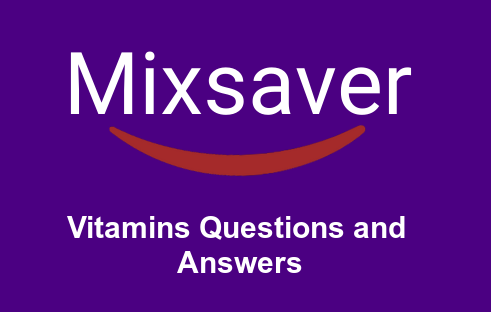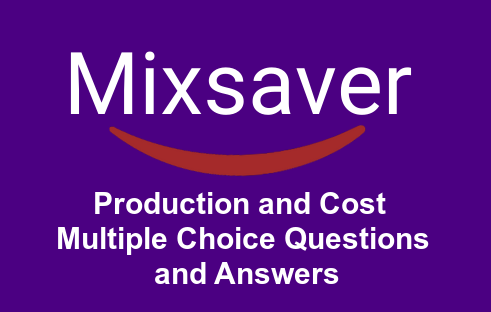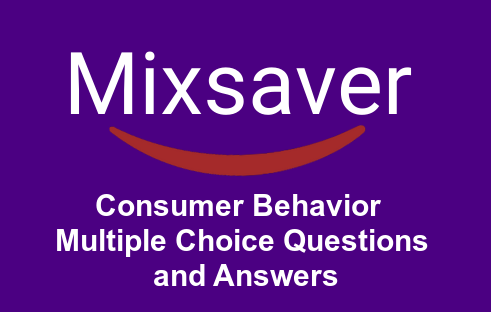Vitamins Quiz Multiple Choice | Mineral Nutrition mcq
1. Which vitamin is required for the absorption of calcium from the gut?
(a) Vitamin-K
(b) Vitamin-B
(c) Vitamin-D
(d) Vitamin-E
Ans. c
2. Which vitamin increases the absorption of iron from the gut?
(a) Vitamin-C
(b) Vitamin-K
(c) Vitamin-D
(d) Vitamin-E
Ans. a
3. The active coenzyme of vitamin-D is
(a) calcidiol
(b) caiciferol
(c) calcitriol
(d) None of these
Ans. b
4. Pantothenic acid is important for which of the following steps or pathways?
(a) Fatty acid synthesis
(b) Gluconeogenesis
(c) Pyruvate carboxylase
(d) Glycolysis
Ans. a
5. Sideroblastic anaemia occurs due to the deficiency of
(a) vitamin-B6
(b) vitamin-B3
(c) vitamin-B1
(d) vitamin-B12
Ans. a
6. All are signs of niacin deficiency except
(a) hair loss
(b) diarrhoea
(c) dementia
(d) dermatitis
Ans. a
7. Thiamine deficiency leads to
(a) beri-beri
(b) pellagra
(c) scurvy
(d) night blindness
Ans. a
8. If a person develops a complete carnivorous life style which vitamin is most likely to become deficienz
(a) Cobalamin
(b) Vitamin-C
(c) Niacin
(d) Thiamine
Ans. b
9. Which of the following is not a dietary antioxidant?
(a) Vitamin-C
(b) B-carotene
(c) Vitamin-K
(d) Lipoic acid
Ans. c
10. Biotin is involved in which type of reactions?
(a) Dehydrations
(b) Carboxylations
(c) Hydroxylations
(d) Decarboxylations
Ans. b
MCQ on Vitamins pdf
11. Which vitamin is necessary for coenzyme-A synthesise
(a) Pantothenic acid
(b) Biotin
(c) Pyridoxine
(d) Ascorbic acid
Ans. a
12. Which of the following vitamins does not act as, precursor for coenzymes?
(a) Ascorbic acid
(b) Folic acid
(c) Thiamine
(d) Biotin
Ans. a
13. Choose the incorrect statement about active site of an enzyme.
(a) The active site is a three dimensional cleft
(b) The active site takes up a large part of the total volume of an enzyme
(c) Substrate are bound to enzymes by multiple weak interactions
(d) The specificity of binding depends on the precisely defined arrangement of atoms in an active site
Ans. b
14. Which of the following is a substrate specific enzymet
(a) Hexokinase
(b) Decarboxylase
(c) Thiokinase
(d) Lactase
Ans. d
15. The conversion of pyruvate to oxaloacetate needs participation of which of the following as coenzymet
(a) Biotin
(b) NAD
(c) NADPH
(d) None of these
Ans. a
16. An enzyme that catalyses the conversion of an aldose to a ketose sugar would be classified as one of the
(a) isomerases
(b) hydrolases
(c) axidoreductases
(d) transferases
Ans. a
17. The enzyme where catalysis involves transfer of electrons are named as
(a) lyases
(b) oxidoreductases
(c) transferases
(d) isomerases
Ans. b
18. Ribozymes are
(a) RNAS with enzyme activity
(b) enzymes which use ribose as substrates
(c) enzyme RNA complexes
(d) enzymes working on DNA
Ans. a
19. Abzymes are
(a) enzymes that hydrolyse antibodies
(b) also referred as zymogens
(c) antibodies that have catalytic activities
(d) enzymes that are highly specific like antibodies
Ans. c
20. The Km of an enzyme is
(a) the substrate concentration that gives half maximal velocity
(b) a dissociation constant
(c) one half of the V max
(d) the substrate concentration that gives maximal velocity
Ans. a
Multiple Choice Questions on Minerals
21. Zymogen is the
(a) The inactive form of an enzyme activated by cleavage
(b) The unfolded form of the enzyme
(c) The active form of an enzyme
(d) The complex formed between an enzyme and its substrate
Ans. a
22. Isozymes can be characterised by
(a) the different chemical reactions that they catalyse
(b) the differences in their elution profile from a size exclusion column
(c) differences in their amino acid sequences
(d) All of the above
Ans. c
23. Lower value of Michaelis constant shows
(a) greater affinity of the enzyme for the substrate
(b) enzyme is allosteric
(c) less affinity of the enzyme for the substrate
(d) None of the above
Ans. a
24. Which molecule binds the active site of an enzymet
(a) Competitive inhibitor
(b) Non-competitive inhibitor
(c) Allosteric intvitbitor
(d) Aliosteric activator
Ans. a
25. Which of the following is true about non-competitive inhibition?
(a) Km increases
(b) V max decreases
(c) V max increases
(d) Km decreases
Ans. b
26. Which of the following vitamins are produced by symbiotic bacteria in humans?
(a) Vitamin-B and K
(b) Vitamin-A and B
(c) Vitarmin-E
(d) Vitamin-D
Ans. a
27. Beri-beri is
(a) communicable disease
(b) Intectious disease
(c) deficiency disease
(d) None of these
Ans. c
28. Vitamin-B12 is involved in formation of coenzyme
(a) NAD, NADP
(b) FMN, FAD
(c) NAD, FAD
(d) NADP, FMN
Ans. b
29. Which one of the following is a trace element for animal body?
(a) Phosphorus
(b) Magnesium
(c) Chlorine
(d) Manganese
Ans. d
30. Which one of the following vitamins can be synthesised by humans?
(a) C
(b) A
(c) E
(d) B
Ans. b
MCQ on Mineral Nutrition
31. Which one of the wrongly matched?
(a) Niacin-Pellagra
(b) Vitamin-K-Sterility
(c) B1-Beri-beri
(d) None of these
Ans. b
32. Excessive bleeding from an injury is due to deficiency of
(a) vitamin-A
(b) vitamin-B
(c) vitamin-K
(d) vitamin-E
Ans. c
33. Which is nota source of vitamin-A?
(a) Carrot
(b) Yeast
(c) Mango
(d) Apple
Ans. b
34. Study of vitamins is called
(a) vitology
(b) vitaminosis
(c) vitaminology
(d) None of these
Ans. c
35. The vitamin required for the formation and maturation of RBC’s in mammals is
(a) K
(b) C
(c) B12
(d) B7
Ans. c
36. Which out of these is often called as trace nutrient?
(a) Protein
(b) Mineral
(c) Vitamin
(d) Carbohydrate
Ans. c
37. What property does vitamin exhibit during the process of cellular respiration?
(a) Enzymes
(b) Coenzymes
(c) Prosthetic group
(d) Cofactor
Ans. b
38. Which is known to be the richest source of vitamin-B12?
(a) Spirullina
(b) Chocolate
(c) Rice
(d) Carrot
Ans. a
39. Richest source of vitamin thiamine is
(a) fish liver oil
(b) curd
(c) milk
(d) whole wheat bread
Ans. d
40. Antipellagric vitamin is considered to be
(a) niacin
(b) folic acid
(c) ascorbic acid
(d) choline
Ans. a
Multiple Choice Questions on Vitamins, Minerals and Enzymes
41. Of which vitamin out of these, cod liver oil is the richest source?
(a) Vitamin-A
(b) Vitamin-C
(c) Vitamin-B
(d) Vitamin-K
Ans. a
43. Deficiency of which vitamins fails to impair the phenomenon of clotting of blood?
(a) Vitamin-A
(b) Vitamin-B
(c) Vitamin-D
(d) Vitamin-K
Ans. d
44. Which of the following vitamin is essential for DNA synthesis and cell division?
(a) Vitamin-D
(b) Vitamin-K
(c) Folic acid
(d) Vitamin-B12
Ans. c
45. Largest variety of digestive enzyme is found in
(a) omnivore
(b) herbivore
(c) carnivore
(d) parasites
Ans. a
46. Liver necrosis and muscular dystrophy are caused by lack of this trace element
(a) zinc
(b) molybdenum
(c) arsenic
(d) selenium
Ans. a
47. The malnutrition disease in man is
(a) Cri-du-chat syndrome
(b) Klinefelter syndrome
(c) pot belly syndrome
(d) Edward syndrome
Ans. c
48. Ramu gums often bleed. Which of the vitamin deficiency he may have
(a) Vitamin-K
(b) Vitamin-C
(c) Vitamin-B12
(d) Vitamin-D
Ans. b
49. The set of three elements included fully in micronutrients
(a) Na, Cu, Mg
(b) Fe, Cu, Zn
(c) Fe, K, Ca
(d) Mn, O, P
Ans. b
50. Deficiency of tocopherol in the human body causes this condition
(a) Scurvy
(b) Pellagra
(c) Beri-beri
(d) Infertility
Ans. d





